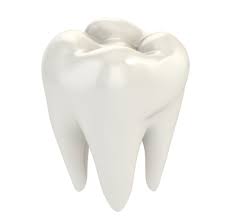The dental industry is a highly complex and competitive market. One search for “dentists in Vancouver” delivers a total of 1,126 results! One issue plaguing the dental industry, however, is that it continues to try competing with antiquated marketing channels (i.e., Yellow Pages).
Thankfully, you’re already taking a big step forward by seeking information about SEO for dental clinics. In doing so, you’re about to gain a competitive advantage in your area.
With a staff boasting years of experience in search engine marketing, Strategis Consulting is here to provide you with a step-by-step guide to increase your rank on Google and access people who have been previously out of reach.
5 Tips to Getting Your Dental Practice on Google’s Page One
- It All Starts with the Root (Website Architecture)
 A strong root is key in healthy teeth likewise a strong foundation is needed for a robust and sales-driven website If something is flawed with the initial design, then your site is doomed to fail. This is where we reference what is known as on-page SEO, which is the framework for how your website is built.
A strong root is key in healthy teeth likewise a strong foundation is needed for a robust and sales-driven website If something is flawed with the initial design, then your site is doomed to fail. This is where we reference what is known as on-page SEO, which is the framework for how your website is built.
On-page SEO accounts for up to 30% of search engine rank, so you can see how important it is, and how it should be the first thing you attend to before anything else. On-page SEO includes everything from your initial site map to the navigational flow and meta-data structure (where you will place important keywords) of your site. In addition to mobile responsiveness and page speed, the latter two play a very important role in 2018 and beyond. There are many ways to tell whether your house is in order in this regard. While an SEO provider will provide you with more insight, you can at least investigate mobile responsiveness and page speed by using a tool such as the Google PageSpeed tool If your website is “in the red” (or even amber) for Mobile and/or Desktop delivery you will need to address these concerns right away.
How do you attend to these on-page concerns? By finding an online marketing firm who can triage and care for your website needs.
- Keyword Targeting by Geography and Sector

If you’re a paediatric dentist serving Burnaby, BC, (for example) you have a very clear keyword goal. However, if you cover a variety of specialties like orthodontics, geriodontics, and periodontics in the Lower Mainland, you will need to do a lot more homework before deciding upon your keyword targets.
There will be varying levels of competition for each specialty (orthodontics, geriodontics, and periodontics) and for each region (Abbotsford, Burnaby, Richmond, Surrey, Vancouver, West Vancouver, etc.). You need to identify the low hanging fruit of keyword targets so that you have a better shot at ranking higher. For example, you may currently rank on Google Page 2 for the keyword target “pedodontics Surrey”. However, you’re not even on Google’s radar for “orthodontics Vancouver”. Sure, the latter expression will theoretically bring more traffic to your website and more clients, but gaining ground for that term could take a year or more. Focusing on “pedodontics Surrey”, however, can see you hitting Google Page 1 within three months or less, and bring you patients and revenue much sooner.
So how the heck do you identify these lucrative keyword targets? By setting up a Google Ad account and conducting an analysis of keywords (along with search volume for each) that are being searched in your area. Once you have built your list of keyword targets, you can simply perform a Google search and click through the search engine results pages (SERPs) to see where your website sits relative to competition. From there, you can identify the aforementioned low hanging fruit. Just make sure you’re not signed into your Google account when you do so, as that will skew the results and make it look like you’re ranking better than you really are.
In the end, only an SEO expert can generate a strategic table of keyword targets, but by playing around with the Keyword Planner and navigating the SERPs you will better grasp the keyword targeting concept.
- Keyword Targeting by Concepts
Now that you have some insight into the keyword identification process, we can dive deeper in the long-tail keyword concept. This is where your unique skill set and specialized products/services come into play to make you stand out from the crowd.
 When you target keywords that address very specific dental concepts, you have an even better shot at ranking for high-converting expressions, which will target clients who are much further along in the purchase and decision-making process. For example, let’s say one of the things that makes your clinic unique, is that you specialize in Invisalign and other dentofacial orthopaedic initiatives. In addition to targeting your primary keyword expression (i.e. “orthodontics Surrey”) you can also target phrases like “Invisalign Vancouver”, affording you a two-pronged attack on the competition. The same applies to any concept that makes your business unique.
When you target keywords that address very specific dental concepts, you have an even better shot at ranking for high-converting expressions, which will target clients who are much further along in the purchase and decision-making process. For example, let’s say one of the things that makes your clinic unique, is that you specialize in Invisalign and other dentofacial orthopaedic initiatives. In addition to targeting your primary keyword expression (i.e. “orthodontics Surrey”) you can also target phrases like “Invisalign Vancouver”, affording you a two-pronged attack on the competition. The same applies to any concept that makes your business unique.
While the search volume for specific terms can be more limited, the search is coming from clients who are looking for a dental professional NOW, and with the right positioning on Google they will come to YOU over your competition.
Once you have all of your keyword targets lined-up, they must be integrated into the meta-data (as per item #1 above) and into the content of the appropriate pages on your website, in addition to being included in your regular blog post updates.
- Curating Links for Your Dental Office
With your on-page issues addressed and your keyword targets executed within static (pages) and updated (blog posts) content, you now need to switch focus to what is called off-page SEO, predominantly in the form of backlinks.
What are backlinks? These are links that reside on other websites that point back to your website. This is the most challenging part of SEO, because not just any website will do. It needs to be an authoritative website that hosts content that is compatibly relevant to your sector. Types of websites with content relevant to the dental industry include (but are not exclusive to) the following:
- Dental industry online news resources
- Dental association websites
- School websites
- Dental specific directories
If you have any connections to writers, bloggers, or media for any of the above, reach out to them to see if they are willing to reference your business on their websites’. True, this process will occur naturally with a strong content delivering strategy on your website, but it will take longer to achieve. For instance, by updating your blog on a weekly basis with informative, engaging, and useful content, online writers will find this content (via search); and when the information you provide is relevant to an article they themselves are writing, they may very well reference your blog article via linked attribution to your website.
Again, this is a very challenging part of the SEO process, and one that often requires media/blogger outreach support from an online marketing firm but given that your backlink profile accounts for about 20% of search engine rank, it’s certainly worth the effort and investment.
- Google My Business (and other social signals)

Your dental clinic wants to get on the Google Map for your service area. Once there, you not only have a shot at getting two results on Google Page 1, you will have the opportunity to secure Google Reviews (which impacts rank) and engage/reengage clients who post reviews, while being able to answer questions posed by prospective clients right there on the Google Search Engine Results page (SERP). This can all be accomplished by setting up your Google My Business (GMB) profile and verifying your website on GMB. You can start the process here, but if you’re concerned about whether or not you’ll miss a step, it may be better to leave set-up and management to a social media marketing agent.
And what about the other social tools, out there? Well, since social network account for about 5% of search engine rank in 2018 and for the foreseeable future, it is absolutely necessary that your business set up and maintain (even with just one post per week) a LinkedIn, Facebook, Twitter, and Instagram (connected to Facebook) profile. Consider this, if all else is equal, and either you or a competitor is the one with a full suite of social networks, the one that plays the social game will earn a higher spot on Google. If you don’t have the time to bother with social media, simply let a professional manage it for you.
There’s certainly more to the realm of search engine optimization/marketing and how it can be applied to push your dental practice website to the top of Google, but with all the above you are now ready to make a more educated decision about which direction you should take. The next step, is to contact Strategis Group today to get started.
 Allemande After earning her degree at Simon Fraser University for New Media Journalism and Editing, Allemande has become an accomplished writer and editor. She is also certified in strategic social media marketing, Google Ads, Google Analytics, and digital sales.
Allemande After earning her degree at Simon Fraser University for New Media Journalism and Editing, Allemande has become an accomplished writer and editor. She is also certified in strategic social media marketing, Google Ads, Google Analytics, and digital sales.
Allemande fluently identifies the channel and content mix that is precisely right for your business and audience. She conducts in-depth analytics for continuous improvement in your audience engagement and generation of sales leads through strategic planning and search engine optimization (SEO), establishes KPIs and related metrics, and prepares meaningful reports that you can quickly action. Connect with Allemande.


I think the admin of this site is actually working hard for his website, for the reason that here every
information is quality based stuff.
Amazing! Its really remarkable article, I have got much clear idea regarding from this post.
And the majority of them are applying search engines.
Hi! I just want to offer you a big thumbs up for the excellent information you have got
here on this post. I’ll be coming back to your website for more soon.
I am so happy to get this post. This is a nice post. I read your post.This is great Thanks for published this post.
Really informative, thanks for sharing this!